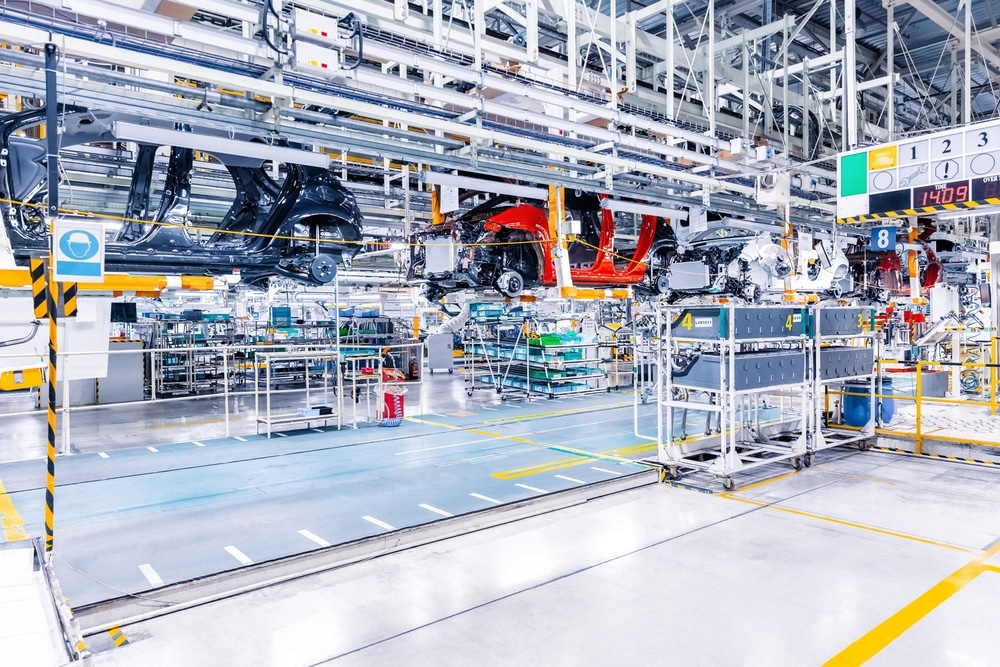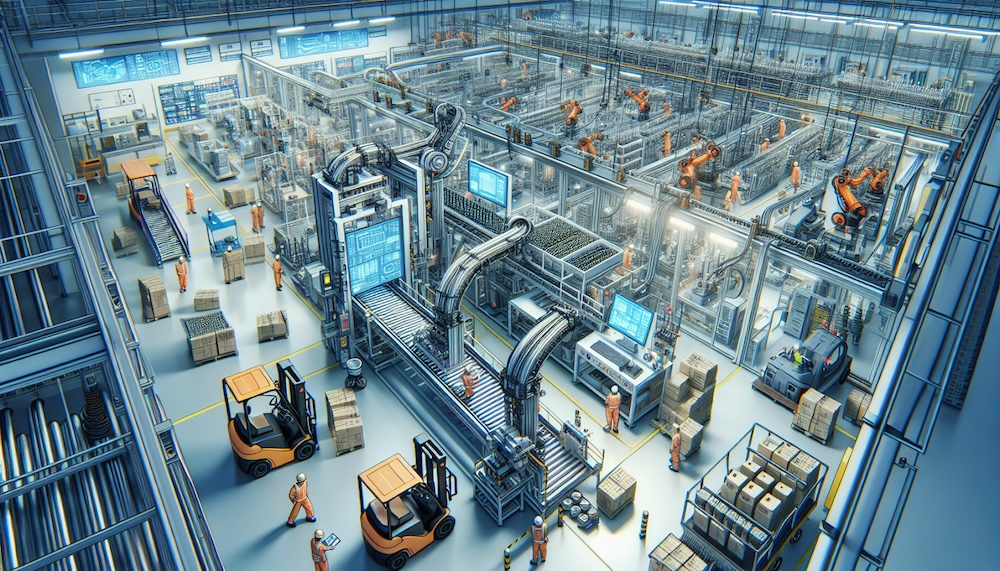To boost productivity and streamline operations on your manufacturing shop floor, it’s essential to understand the principles of shop floor management. This article cuts through the noise to bring you targeted techniques to enhance production flow, improve workforce engagement, and maintain high-quality standards, all while keeping safety at the forefront. Dive into the heart of efficient shop floor management and come away with concrete practices to elevate your production environment.
Key Takeaways
- Effective shop floor management (SFM) is a comprehensive approach that includes optimizing production efficiency, engaging workers in process control, and implementing continuous improvement (Kaizen) along with robust communication and leadership.
- Lean principles and tools such as visual management systems, Manufacturing Execution Systems (MES), and shop floor control software are foundational for enhancing efficiency and collaboration within shop floor management.
- Digitalization’s impact on shop floor management is profound, with real-time data collection and analysis, IIoT, and machine learning enabling predictive maintenance and operational optimization, despite challenges balancing productivity and quality.
Understanding Shop Floor Management
Shop floor management is the art and science of orchestrating the most efficient production within the production floor of a manufacturing facility. It’s not just about keeping an eye on the machines or ensuring workers are doing their jobs. It’s far more comprehensive, focusing on activities at the production base to optimize management and leadership tasks in a manufacturing environment through the use of shop floor management techniques.
At the core of Shop Floor Management (SFM) lies the concept of the ‘shop floor’, which pertains to the administration and enhancement of daily production activities. What’s the ultimate goal of shop floor management? It’s the ceaseless refinement of processes to cater effectively to daily customer demands. Hence, it comes as no shock that SFM serves as a powerful framework engineered to enhance daily tasks in production and administration. It emphasizes:
- On-site management
- Leveled communication
- Visualization
- Methodical problem-solving
- Relentless betterment
Guaranteeing operational efficiency in manufacturing facilities forms a vital part of shop floor management. Its effectiveness is pivotal as it can profoundly influence the overall productivity and efficiency of a business.
Key Components of Shop Floor Management
What makes up the key elements for successful shop floor management? To start with, process control holds a significant place. This involves:
- Observing operations
- Verifying critical processes
- Engaging with workers
- Sticking to established standards
It’s like coaching a team, ensuring each player performs their part at the right time and in the right way.
Next, we have leadership. A shop floor manager’s role isn’t just to oversee – it’s to lead. This involves effective communication, sound decision-making, and creating an environment that’s conducive to operational success.
Finally, we have continuous improvement, or Kaizen. This promotes a culture of regular enhancement and persistent learning within shop floor operations, fostering an environment where betterment is always on the agenda.
Shop Floor Management Objectives
What’s the ultimate objective here? What do we aspire to accomplish with efficient shop floor management? At its heart, shop floor management is all about efficiency. Central goals include standardizing and streamlining processes on the shop floor to achieve this operational efficiency. It’s about ensuring every cog in the machine is working seamlessly and efficiently, from the mailroom to the manufacturing line.
Improving process efficiency and reducing waste are key objectives, as seen in the successful outcomes of visual management. Maximizing output and maintaining product quality are also critical targets of shop floor management directives. But it’s not all about the products.
Ensuring employee safety and fostering engagement are integral to the objectives of shop floor management as well. After all, a happy, safe workforce is a productive one.

Implementing Lean Principles in Shop Floor Management
Incorporating lean manufacturing principles is one approach to augment efficiency and eradicate waste in shop floor management. These principles focus on teamwork, culture discipline, and quality work. Lean Management is structured around five core principles:
- Customer focus
- Value stream recognition
- The flow principle
- The pull principle
- The process of continuous improvement
Lean Production revolves around achieving production without wastage, with a premium on accuracy, efficiency, and the reduction of errors. It seeks continuous process optimization, engaging the whole value-added chain according to its core principles. Think of it like a finely tuned engine, where every part works together seamlessly for the smoothest, most efficient ride.
Toyota Production System and Its Influence on SFM
What’s the origin of these principles? Let’s take a brief look at 1950s Japan. This was when the Toyota Production System (TPS) was born, which served as the foundation for modern Shop Floor Management (SFM). Revolutionary core principles of the Toyota Production System such as just-in-time delivery, standardization, and a focus on quality and teamwork, revolutionized shop floor management.
The evolution of the Toyota Production System into Lean Production and subsequently Lean Management has influenced the entire value-added chain with the aim of achieving waste-free production.
The Role of Continuous Improvement (Kaizen)
One of the fundamental principles birthed from this revolution was the concept of Kaizen, synonymous with continuous improvement. Kaizen promotes continuous improvement in manufacturing processes through small, incremental changes.
The application of continuous improvement principles can lead to significant enhancements in product quality and team collaboration over time. Shop floor management encourages a culture of continuous improvement, which is fundamental to achieving ongoing productivity enhancements. It’s all about striving for better, never resting on our laurels, and constantly looking for ways to improve.
Related: Lean Manufacturing Principles, Benefits, And Case Studies

Essential Tools and Techniques for Effective Shop Floor Management
Unquestionably, to implement these principles effectively, we need the appropriate tools and techniques. Robotics, for example, are integral tools for automating material handling on the shop floor, contributing to increased labor efficiency. By taking care of the heavy lifting, we can focus on other tasks.
Quality control is another key area. By setting clear quality standards, determining acceptable defect levels, and developing response plans when defects occur, we can optimize quality control on the shop floor. We also have systems such as Computer Numeric Control (CNC) for automating machine tools, which can lead to improved process efficiency.
Routine activities such as routing material movement, sequencing procedures, scheduling, and finding deviations are also essential ways to improve shop floor management.
Visual Management Systems
Visual management forms an indispensable component of this toolkit. It involves using visual aids to communicate information, enforce work standards, and identify issues quickly. It’s like having a visual guidebook to the shop floor, helping everyone understand what’s happening at a glance.
Implementing visual management results in transparent processes, increased accountability, and facilitates work on the shop floor, potentially reducing the need for extensive training. Examples of visual management tools include project status boards, Kanban cards, 5S control boards, metrics dashboards, and Andon lights. These visual aids and dashboards allow for tracking key performance indicators (KPIs), contextualizing data for informed decisions, and providing essential information to management and executives.
Manufacturing Execution Systems (MES)
Another vital instrument in our shop floor management arsenal are Manufacturing Execution Systems (MES). These systems are a comprehensive suite of tools that address challenges in efficiency, production management, and employee alignment.
MES assists in production planning by providing insights into current and intended production schedules. It enhances manufacturing efficiency by offering visualization tools for a comprehensive view of processes. Compared to process control systems, which focus on specific production aspects, MES offers a broader view of manufacturing processes. It’s like having a bird’s eye view of the entire manufacturing process, enabling you to see the big picture.
Shop Floor Control Software
Shop floor control systems play a critical role in monitoring and reporting work processes in real-time, ensuring efficient scheduling and tracking of operations. The core tenets of a shop floor control system are data collection, analysis, and real-time monitoring.
Integrating MES with ERP Systems for Enhanced Productivity
Integrating Manufacturing Execution Systems (MES) with Enterprise Resource Planning (ERP) systems or a WMS results in a seamless flow of information, aligning production processes with strategic business goals. This integration facilitates real-time data exchange, ensuring that production activities are synchronized with overall business objectives.
Advanced Process Control (APC) applications play a crucial role in this setup. They help reduce variability in manufacturing processes, enhancing both product quality and production efficiency. By providing precise control over production parameters, APC applications ensure consistent output, meeting quality standards while optimizing resource usage.
To further balance quality and productivity, dynamic task assignment and job card digitization can be implemented. These tools streamline supervisory tasks, allowing managers to allocate resources and monitor operations more efficiently. This not only saves time but also improves overall shop floor management, leading to enhanced operational performance.

Strategies for Enhancing Shop Floor Communication and Collaboration
Now, let’s transition to the human facet of shop floor management. Clear communication and collaboration are crucial for a well-functioning shop floor. The inception of clear communication channels marks the initial phase of shop floor management implementation. It involves employing techniques such as stand-up meetings, daily huddles, and other organized meetings to guarantee uniformity in communication. It’s about creating a culture where everyone feels heard and understood, where ideas can be shared freely, and where everyone is on the same page.
Fostering a positive culture is crucial. Here are some strategies to achieve this:
- Encourage managers to act as coaches and mentors, facilitating seamless communication and avoiding misunderstandings by encouraging open dialogue.
- Provide frequent feedback to employees to boost their morale and enhance productivity.
- Clearly communicate the broader mission and value of their work to help employees understand their contribution to organizational goals and promote better engagement.
- Utilize employee communication applications that support multiple languages to help overcome language barriers on the shop floor, fostering an inclusive environment for all employees regardless of their linguistic backgrounds.
Structured Communication Channels
Structured communication channels contribute significantly to minimizing misunderstandings and mistakes on the shop floor. They can lead to increased efficiency and productivity. These channels provide a means for quick dissemination of information and directives, which are essential in dynamic shop floor environments.
Open communication channels ensure that all team members are aligned with the current production goals and performance expectations. Communication protocols help in standardizing responses during regular and exceptional circumstances, ensuring a consistent and effective approach to situations.
Transparent communication protocols also empower employees to report issues without fear of retribution, leading to a more collaborative and proactive workforce.
Employee Training and Empowerment
Employee training and empowerment hold a pivotal position in nurturing a proactive and participative workforce. Training employees in the use of digital tools and in developing cross-functional skills is crucial to keep pace with a digitalized shop floor environment. It’s like giving our workforce the keys to the kingdom, empowering them with the skills they need to excel.
Involving all employee levels in problem-solving ensures that issues are not only resolved but also prevented from recurring, instilling a sense of ownership and encouragement for suggesting improvements. Integrating new hires through methods like assigning a training buddy and enabling two-way communication can significantly improve their adaptation to the factory culture and fill gaps in traditional training protocols.
Adoption of an employee safety management system is key in nurturing a safety culture, empowering employees to report issues proactively and ensuring the sustainability of a productive work environment.
The Impact of Digitalization on Shop Floor Management
Digitalization has exerted a deep influence on shop floor management. Real-time communication modes and digital workplace platforms facilitate efficient data exchange between management and frontline workers, enhancing shop floor management. Automated data capture through digital technologies enables operators to focus more on production activities rather than on manual documentation.
Advanced shop floor management and control software are instrumental in implementing digitalization on the shop floor. Transitioning from paper-based systems to digital devices results in efficient data management, real-time visibility, and an overall increase in operational efficiency and revenue for SMEs.
Real-Time Data Collection and Analysis
The collection and analysis of real-time data proves to be a game-changer in enhancing production processes and implementing quality standards. MES systems are pivotal in closing the information gap between plant floor production and higher-level enterprise resource planning, by offering real-time manufacturing insights.
Accessing real-time, accurate data through MES is essential for production optimization, enforcing quality standards, and complying with regulatory requirements. IoT-enabled devices facilitate instantaneous data collection from the shop floor, enabling swift data analysis and real-time information visualization through dashboards. Automated data collection systems can interface with various types of machinery, both modern and legacy, via sensors, to ensure a comprehensive data collection from the shop floor.
Without real-time data monitoring mechanisms, measuring labor efficiency and overall equipment effectiveness becomes a significant challenge in managing the shop floor. Implementing technological solutions like real-time sensors, together with MES, improves quality control by monitoring production processes and signaling abnormalities instantaneously.
The Role of IIoT and Machine Learning
Cutting-edge technologies such as the Industrial Internet of Things (IIoT) and machine learning are transforming shop floor management. Digital transformation in shop floor management incorporates these advanced technologies to optimize operations and safety.

Common Challenges and Solutions in Shop Floor Management
Naturally, there are common challenges you may encounter when implementing shop floor management. Some of these include:
- Traditional work structures
- Lack of team spirit
- Issues with management roles
- Lack of visibility from the top floor to the shop floor, which can hinder effective decision-making
- Struggles with manual job allocations, which can reduce efficiency and productivity
Unplanned machine downtime and the associated maintenance costs can significantly impact productivity on the shop floor. Manufacturing floors may also face challenges related to inadequate employee health safety measures. But don’t worry – with the right strategies, tools, and techniques, these challenges can be overcome.
Balancing Quality and Productivity
A chief challenge in shop floor management is striking the right equilibrium between quality and productivity. It’s critical for ensuring that manufacturing processes are both efficient and output a product that meets quality standards. Implementing cross-training for employees can help in achieving this balance by making the workforce more flexible and capable of maintaining productivity without sacrificing quality.
Lean manufacturing principles, such as streamlining processes and eliminating waste, ensure that productivity is maximized without compromising the quality of the output. Overemphasizing productivity can lead to quality issues, which might result in customer dissatisfaction and increased costs due to rework and warranty claims. Prioritizing quality over productivity can cause production bottlenecks and missed delivery deadlines, negatively impacting customer satisfaction.
A business should aim for a synthesis of both high quality and high productivity to maintain customer satisfaction and stay competitive. Continuous monitoring and improvement of processes, through methods such as Six Sigma, help in refining both productivity and quality over time.
Managing Change and Adaptability
In a perpetually changing industry, handling change and promoting adaptability is of utmost importance. The resilience of Toyota during supply chain disruptions demonstrated the effectiveness of their production system in handling change and maintaining efficiency.
Preparing employees for industry changes through development conversations is crucial for fostering adaptability and ensuring that staff are positioned for future skill requirements. It’s about equipping our workforce with the right tools and training to adapt to change and excel in their roles.

ASC Software: Transforming Shop Floor Management
At ASC Software, we offer tailored solutions to help manufacturers achieve peak productivity, maintain quality, and ensure safety. With over 30 years of industry-leading experience, our comprehensive software addresses the complex demands of warehouse, distribution, manufacturing, and 3PL operations.
Our Solutions:
- Warehouse Management Software (WMS): Streamline inventory and order processing to boost efficiency and reduce errors, ensuring timely delivery and optimal stock levels.
- Manufacturing Execution System (MES/MRP): Gain real-time control over production processes, from scheduling to shop floor tracking, enhancing efficiency, quality, and compliance with industry standards.
- Warehouse Control System (WCS): Automate and manage warehouse operations, from receiving to yard management, improving workflow, reducing downtime, and maximizing productivity.
Why Choose ASC Software?
- Lean Principles Expertise: Our solutions are grounded in lean manufacturing principles, designed to eliminate waste and enhance efficiency, helping you achieve higher output with lower costs.
- Continuous Improvement Commitment: We provide your workforce with advanced tools and comprehensive training to drive ongoing process improvements and foster a culture of excellence.
- Digital Transformation Leadership: Embrace the power of real-time data visibility and predictive maintenance with our cutting-edge technologies, ensuring your operations are always optimized and future-ready.
Industry Expertise:
ASC Software provides specialized supply chain solutions for:
- Wholesale Distribution: Enhance distribution efficiency and accuracy with our integrated WMS and WCS solutions.
- 3rd Party Logistics (3PL): Manage complex logistics operations with real-time visibility and seamless coordination.
- Pharmaceutical Manufacturing: Ensure compliance and traceability with our robust MES and WMS systems.
- Food & Beverage: Maintain quality and safety standards while optimizing production and inventory processes.
- Process & Discrete Manufacturing: Achieve precise control and continuous improvement across all manufacturing stages.
Partner with ASC Software to elevate your shop floor management strategies and achieve unparalleled operational excellence. Contact us today to learn how our innovative solutions can transform your manufacturing processes and drive your business forward.
Summary
Effective shop floor management is multi-faceted, encompassing everything from lean principles and visual management systems to digital technologies and employee empowerment. It’s a delicate balancing act, ensuring quality and productivity while managing change and fostering a culture of continuous improvement. Embracing these principles will not only optimize your shop floor operations but also contribute to your business’s overall success. Remember, the shop floor is the heart of your manufacturing process and is the key to a healthy, thriving business.
Ready to transform your shop floor management? Contact ASC Software today to learn how our innovative solutions can drive your manufacturing processes to new heights.
Frequently Asked Questions
What is shop floor management?
Shop floor management focuses on optimizing production and efficiency in a manufacturing environment by using processes, methods, and systems.
What are the key components of shop floor management?
The key components of shop floor management are process control, leadership, and continuous improvement, which are essential for optimizing production and efficiency.
How can lean principles enhance shop floor management?
Lean principles like teamwork, discipline, and quality work can enhance efficiency and reduce waste in shop floor management, leading to improved productivity and performance.
What role does digitalization play in shop floor management?
Digitalization plays a vital role in shop floor management by providing real-time insights into production processes and enforcing quality standards through technologies like real-time communication and data collection. It enhances efficiency and accuracy in managing shop floor operations.
What are some common challenges in shop floor management?
Managing change and adaptability, balancing quality and productivity, and overcoming traditional work structures are common challenges in shop floor management. Adaptability and balance are key to addressing these challenges.




